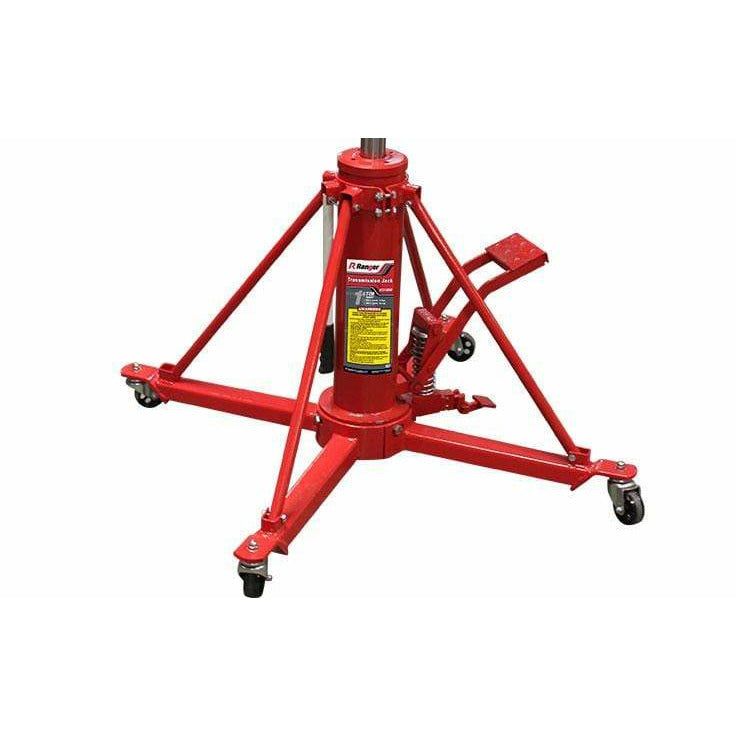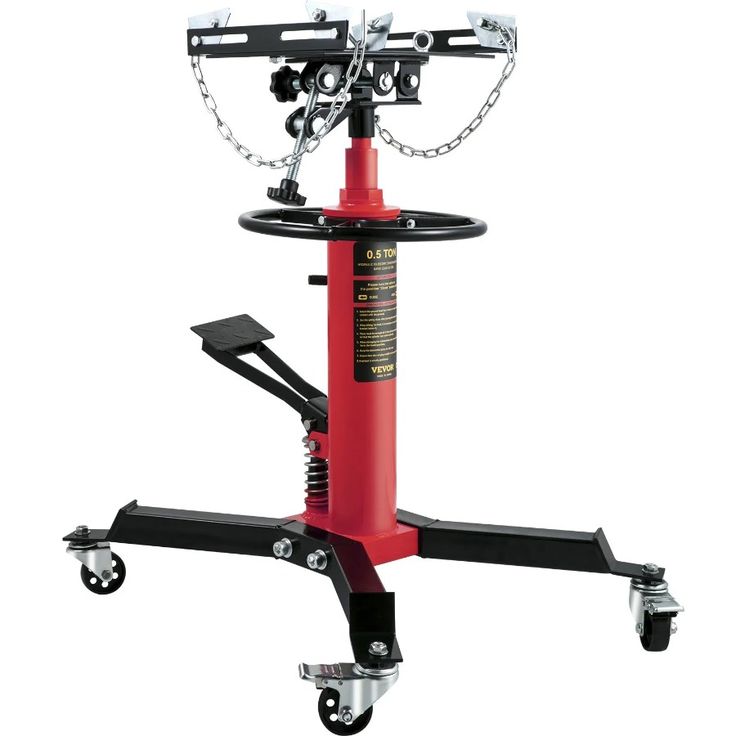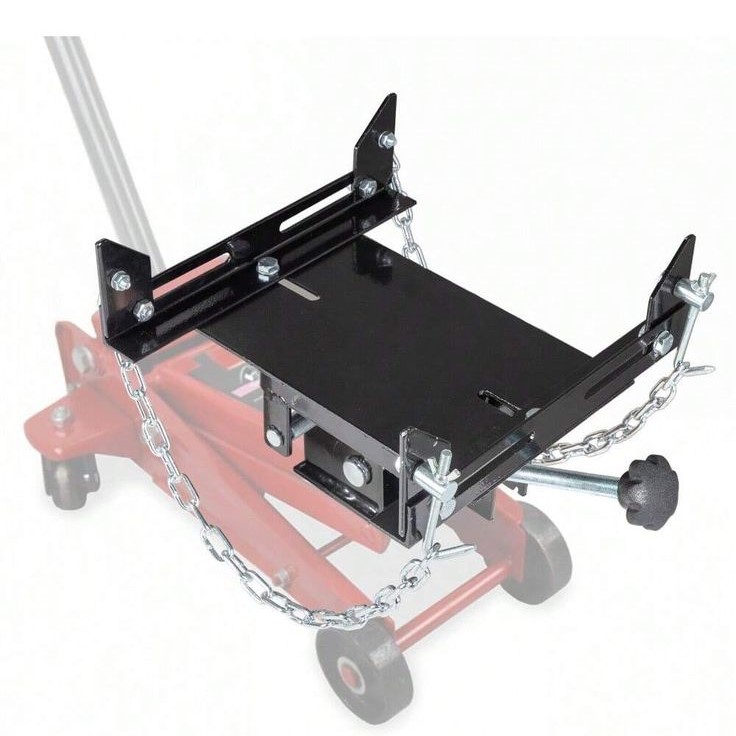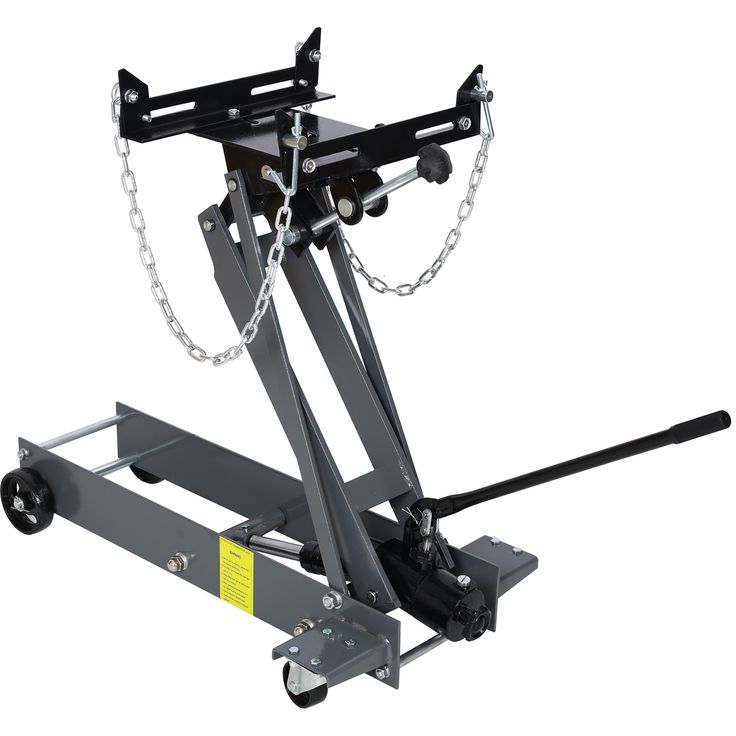Introduction
In the realm of automotive repairs, specific tools stand out as absolutely indispensable. One such tool is the transmission jack, a mechanism designed to support and lift a vehicle‘s transmission during maintenance and replacement tasks. For both professional mechanics and DIY enthusiasts, possessing a quality transmission jack can significantly enhance the safety and efficiency of the repair process. This article delves into the fundamental features, benefits, types, and practical usage tips related to transmission jacks. Incorporating this tool into your garage setup can lead not only to expedited repairs but also to more secure working conditions.

A transmission jack’s primary function is to assist in the safe removal and installation of transmissions, a task that can be cumbersome and dangerous without the right equipment. When lifting heavy components like transmissions, traditional car jacks may not offer the necessary stability or height adjustments. Therefore, investing in a dedicated transmission jack becomes vital for ensuring that mechanical work is performed safely.
The Importance
Working on a vehicle involves various high-stress tasks, and dealing with the transmission is among the most challenging. The inherent weight and complexity of a transmission make its handling without proper equipment risky for both the technician and the vehicle. Thus, using a transmission jack serves several critical purposes:
- Safety: The jack provides stable support for heavy components, ensuring that they do not fall unexpectedly, which could lead to serious injuries.
- Precision: A transmission jack allows for precise adjustments, making it easier to align the transmission with the vehicle’s engine effortlessly.
- Efficiency: With the right tool, tasks can be completed faster, reducing time spent under the vehicle and minimizing the risk of mishaps or errors.
- Accessibility: A transmission jack can grant access to challenging areas that would be almost impossible to work on without the right lifting tool. This accessibility is particularly beneficial when conducting comprehensive repairs.
Overall, the importance of a transmission jack in the automotive service industry extends beyond mere convenience; it is essential for executing safe and effective repairs.
Key Features
When you set out to purchase a transmission jack, several important features merit your attention. Selecting the right model will significantly influence the efficiency and safety of your repair tasks. Below are key features to consider:
- Weight Capacity: Different jacks have varying weight limits. Make sure to choose a jack with a capacity that exceeds the weight of the heaviest transmission you’ll be working on. For example, most passenger vehicle transmissions weigh between 100 to 200 pounds, but some heavy-duty models may be significantly heavier.
- Adjustable Height: A good transmission jack should feature height adjustability. This allows you to raise and lower the transmission precisely to match the engine for a secure fit. Check for models with a broad height range to accommodate diverse vehicle types.
- Wide Base: Stability is crucial when working with heavy components. A wide base minimizes the risk of tipping. Opt for a jack that offers a broad and stable footprint.
- Pneumatic Wheels: Wheel features enhance mobility, allowing you to reposition the jack as necessary while maintaining a safe lift. Consider models that come with high-strength wheels designed to handle regular use.
- Material Durability: Transmission jacks typically come in steel or aluminum. Steel provides strength but adds weight, while aluminum is lighter but can be equally durable. Assess your working conditions and choose a material that suits your needs.
Different Types
As you navigate the selection of transmission jacks, it’s beneficial to know the various types available in the market. Each type serves specific functions:
Standard Transmission Jacks
- Common Usage: Standard transmission jacks are typically the most widely utilized in both professional and home garages.
- Design Features: They feature a flat surface, which provides a stable platform for securely placing various types of transmissions. This flat design minimizes the risk of slippage during the lifting process.
- Applications: These jacks are suitable for a wide range of vehicles, making them a versatile choice for mechanics who work on different models and makes.
Low-profile Jacks
- Specialized Design: Low-profile jacks are specially designed to fit under vehicles that have a low ground clearance, such as sports cars or modified vehicles.
- Space Efficiency: Because their height is minimal, they require less vertical space to operate, making them ideal for tight garages or for tasks performed in constrained areas.
- Functionality: These jacks still offer the same lifting power as standard jacks but are crafted to allow access even in limited clearance scenarios. They can also be used with vehicles that have been lowered as part of customization.
Adapter Jacks
- Versatility: Adapter jacks come equipped with interchangeable attachments that allow them to accommodate various shapes and sizes of transmissions.
- Customization: Users can switch out adapters to ensure a perfect fit for each specific transmission type, enhancing their adaptability for different vehicle styles.
- Utility: This makes them an excellent choice for mechanics who work on a diverse array of vehicles, allowing for seamless transitions between different repair jobs without the need to change tools frequently.
Dropping Jacks
- Controlled Descent: Dropping jacks are designed with mechanisms that enable a slow and controlled descent of the transmission, providing added safety during the removal process.
- Safety Features: By allowing the transmission to be lowered gradually, these jacks significantly reduce the risk of accidents caused by sudden drops or uncontrolled movements.
- Technician Advantage: This feature is particularly beneficial for technicians who may be working alone, as it allows for safer handling of heavy components without the need for additional assistance.
Electrical Jacks
- Power Mechanism: Electrical jacks utilize hydraulic lifting systems powered by electricity, simplifying the process and reducing the amount of physical exertion required by the user.
- Ease of Use: With this technology, lifting heavy transmissions becomes less taxing, making it easier for technicians, particularly those who lift frequently or for extended periods.
- Efficiency: These jacks offer quick lifting times and can support heavier loads compared to manual jacks, making them a popular choice in busy shops where time is of the essence.
Familiarizing yourself with these options will help you make an informed decision tailored to your specific needs.
Safety Precautions
Apart from having the right tools, understanding safety protocols is essential to minimize risks while working on vehicle repairs. Here are several safety precautions to observe when using a transmission jack:
- Sturdy Ground Surface: Always position the vehicle and jack on a flat, stable surface to maintain balance. Avoid working on inclines or uneven ground.
- Use of Jack Stands: Whenever you lift a vehicle with any jack, it is critical to support it with jack stands. This additional layer of safety protects you in case the jack were to fail.
- Inspect Before Use: Examine the transmission jack for any signs of damage, including cracks or rust. Ensuring your jack is in good condition is vital for safe operation.
- Work in Well-Lit Areas: Proper lighting is crucial for safety. Make sure your workspace is well-lit to help you see what you are doing clearly and prevent accidents.
- Follow Manufacturer Instructions: Always adhere to the operational guidelines provided by the manufacturer. Proper usage ensures both your safety and the jack’s longevity.
By implementing these precautions, you can create a safer working environment that allows you to focus on your repairs without unnecessary worry.
Maintenance Tips
To prolong the working life of your transmission jack, regular maintenance is paramount. Here are some fundamental maintenance tips:
- Routine Inspection: Regularly check your jack for leaks, damage, and general wear. Catching problems early can prevent larger issues down the line.
- Lubrication: Many jacks have moving parts that benefit from occasional lubrication. Use a suitable lubricant to keep the jack functioning smoothly.
- Cleaning: After every use, clean the jack to remove dirt and grease. A clean jack works better and lasts longer.
- Store Correctly: Keep your transmission jack in a dry place, away from potential damage. Storing it in a humid environment can lead to rust and wear.
- Test Regularly: Before heavy use, perform a test of the jack. Raising and lowering it with a dummy load (if not lifting a transmission) can help ensure it functions correctly.
Adhering to these maintenance practices will help ensure your transmission jack remains reliable and safe over time.
Conclusion: The Unmatched Value of a Transmission Jack in Automotive Repairs
To sum up, a transmission jack is an invaluable tool for ensuring safe and efficient repairs in the automotive industry. By understanding its features and following safety guidelines, both professionals and hobbyists can significantly enhance their repair work’s reliability and performance.

If you are committed to improving your skills and making your automotive repairs more efficient, investing in a quality transmission jack is a step in the right direction. Remember that safety should always be the primary concern during repairs, and a reliable transmission jack provides both peace of mind and practical advantages.
Incorporating a transmission jack into your toolkit is not just about enhancing your capabilities; it’s about promoting a safer, more effective repair environment. Whether you’re lifting a light sedan transmission or handling a heavier-duty unit, the right transmission jack will undoubtedly make the task easier and safer, ensuring that your automotive maintenance experience is one of confidence and expertise.


